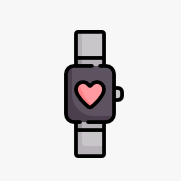Avoiding injury as we return to the gym after COVID-19

Great news was issued around Australia in June when gyms received the all clear to re-open their doors to members. With many Aussies rushing back to their exercise routines it’s important we are cautious before picking up those heavy dumbbells.
During the recent pandemic many of us had no choice with being more sedentary with even the most basic incidental exercise reduced with working from home implemented by many Australian businesses. Avid gym goers were forced into a period of hiatus from their regular exercise including group sessions, boot camps, weight- programs and functional training sessions due to force closures of gyms.
When we exercise less our physical condition declines which increases our risk of injury. So how can we ensure we return back to our normal gym program and avoid unwanted injuries?
It is important that we understand that physical deconditioning is much more rapid then the process of building physical condition. This means that there is a great chance your muscles are going to feel tighter and weaker and you will be more breathless. This is a normal sign and will improve over the coming weeks with regular exercise sessions again. Following the FITT principal might be a great tool to consider as you return to the gym.

Frequency

Intensity

Time

Type
Rebecca Hannon
Exercise Physiologist
B.Ex.Sc M.Clin.Ex.P ESSAM